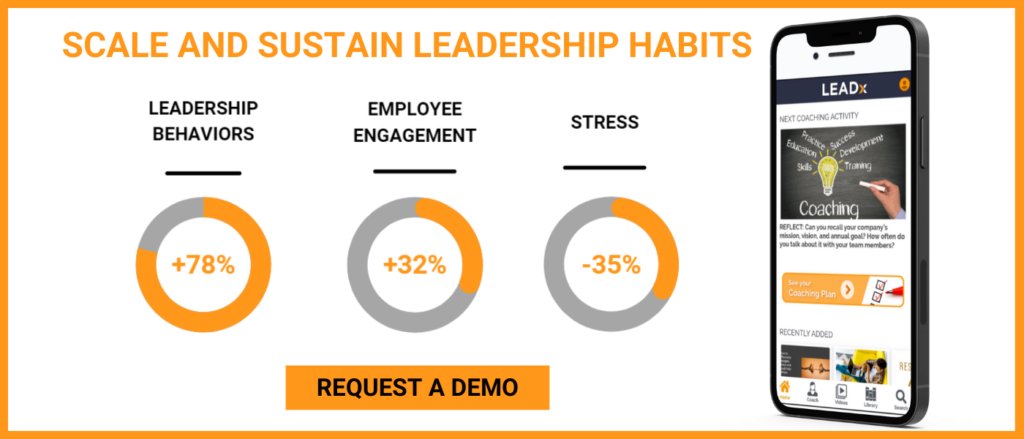
According to a University of Nebraska study of entrepreneurial leadership, the biggest predictor of whether or not people are happy in their jobs isn’t good company culture, nor office camaraderie. It has little to do with compensation, or even the job itself. The single biggest predictor of job satisfaction is authentic leadership.
In his new Amazon bestselling book, Lead Like a Human, Emplify Chief People Officer Adam Weber defines an authentic leader as “someone who is willing and able to be themselves, and leads in a way that feels natural to who they are as a person.”
But leading authentically is easier said than done. Many leaders simply adopted the leadership style of whoever first trained them to be a manager—and are doing just fine. But being an authentic leader means developing a leadership style that is genuine to you as a person. And it starts with getting to know yourself—and the inner workings of your personality—on a deep level.
“Making the time to look inward is the first step,” Weber writes. “Taking a long, hard look in the mirror might be painful, but it’s an essential first step in gaining the confidence required to become your own kind of leader.”
According to Weber, authentic leaders devote time to getting to know their “internal operating system” and cultivating self-awareness. I recently caught up with Weber to discuss four practical ways leaders can get to know their authentic selves and apply the learnings to their leadership.
Create a self-reflection practice.
Self-reflection doesn’t come easily to most of us. It’s hard enough to observe others objectively, never mind ourselves. But that’s why Weber intentionally uses the word “practice” in encouraging readers to establish a daily routine of self-reflection.
“A ‘practice’ insinuates a long-term commitment to continual improvement,” Weber explained. “It’s about the journey, not reaching a destination.”
To start your practice, Weber recommends choosing a method of record-keeping: a physical notebook, a Word document, or even a folder of voice recordings or video diaries. Choose a time in your day and a place that lends to quiet contemplation. Begin your self-reflection practice using the following questions:
● What are you noticing about yourself today?
● How are you showing up at work and in your personal life?
● What is bringing you energy today?
● What is causing you stress?
It probably won’t take more than a few weeks for patterns to emerge.
Cultivate routines that center and ground you.
Are you an early bird, or a night owl? What type of exercise makes you feel best, and when? Do you have a morning ritual that gets your day started on the right foot? What helps you wind down at bedtime? Weber encourages leaders to think through their daily rhythms to pinpoint the rituals, routines, and activities that set them up to be the best version of themselves. Consider activities you can do daily to care for your physical, mental, emotional, and spiritual health. Weber’s early morning routine includes reading poetry, some kind of physical activity, and gratitude exercises. But he cautions against trying implement habits that are in opposition to how you naturally function best.
“I have plenty of colleagues where ‘early to bed and early to rise’ make them nothing but grumpy and exhausted,” Weber said. “We are all different people with different patterns and rhythms. There is no universal answer to what inspires and grounds us.”
Enlist tools.
There are many competing opinions on personality assessments, but Weber has found them to be helpful to his journey, the Enneagram in particular. The Enneagram is made up of nine personality “types” with unique motivations, fears, and coping strategies. But the Enneagram is just one of a myriad of assessments aimed at helping people understand what makes them “tick.” Personality inventories—especially DiSC, Clifton Strengths, and Myers–Briggs Type Indicator–can help you put words to your motivations and gain deeper insight into your strengths and weaknesses. Additionally, bringing an assessment to your team can also help you understand how to communicate more effectively with each individual, based on their personality type and work style.
Ask for feedback.
Everyone has blind spots. But becoming more self-aware requires that you shine a spotlight on the shortcomings you’re not conscious of and learn to see yourself the way others do. This is why asking others for feedback is essential in cultivating self-awareness. But keep in mind that an invitation for candid feedback from a direct report or teammate could be intimidating. Make sure to reiterate that their feedback will help you understand how you “show up” at work, and won’t trigger repercussions. Consider sending some thoughtful, open-ended questions ahead of the discussion, or allow the other person to respond in writing. Constructive criticism is never easy to swallow, but it’s impossible to improve upon issues you’re not aware of. And don’t forget to say “thank you”—both for the feedback, and the courage to deliver it.
At the end of the day, becoming an authentic leader is a journey that’s highly individual.
“There is no silver bullet to becoming an ‘authentic leader,” Weber writes. “It’s a combination of doing the work to become an ‘authentic person’ and applying solid leadership principles and tactics.”
But that work is worth it as authentic leadership inspires authentic, engaged employees.







